Review: Nokia E6 long term review and E72 comparison
Score:
75%
The Nokia E6–00 is currently the only candybar QWERTY device in the latest Symbian line up. Picking up where the E72 left off, the E6 adds a touchscreen and high pixel density display. The E72, just like the E71 before it, was a big hit among Eseries fans. Does the E6 match up to its S60 3rd Edition predecessors? In this review, we take a long-term look at the E6, and discuss whether E72/E71 users should consider an upgrade.
Old devices and usage patterns
Recalling the E72
Before reviewing the E6, we should remind ourselves about the E72, from which many of you might be upgrading.
The E72 was my main smartphone for a very long time, after I reviewed it last year. Despite running S60 3rd Edition, which even last year was quite antiquated, it ticked all the boxes. Then again, we all have a different set of boxes to tick, don’t we? The things that made a good smartphone for me were:
Battery life of the order of days
Its massive BP–4L battery with small screen and modest CPU kept it going for days.
Good Email/PIM support.
Nokia Messaging’s Mail for Exchange support worked well (enough), and thanks to NuevaSync, full Google sync, including tasks, was possible.
An autofocus camera providing sharp images.
I put the E72’s 5 megapixel camera through its paces in my long-term review, and found it to be the best camera I have seen in an Eseries phone. Because of its great camera, it worked perfectly as a document scanner too.
Fast text input.
When I did a survey of typing speeds on various devices, the E72 came out on top. You can read the results here.
The times they are a changin’
Since then, I’ve gone on to use a variety of devices, like the Android powered Nexus One, and Nokia’s flagship, the N8–00. Both are touch screen candybar phones, the antithesis of a device like the E72. However, both served me well, especially in the context of being a handheld office, the second of the criteria mentioned above. Therefore, I have to consider whether using this type of smartphone has affected my tastes.
While the Nexus One has the advantage of more apps, its poor battery life and mediocre camera let it down. On the other hand, the N8 with its superlative camera, and Symbian’s best in class power management, made it a much better companion.
The N8 lacks a user replaceable battery, unless you’re Steve Litchfield! However, its battery life is good enough to get through a day, which satisfies the first requirement on which I judged the E72.
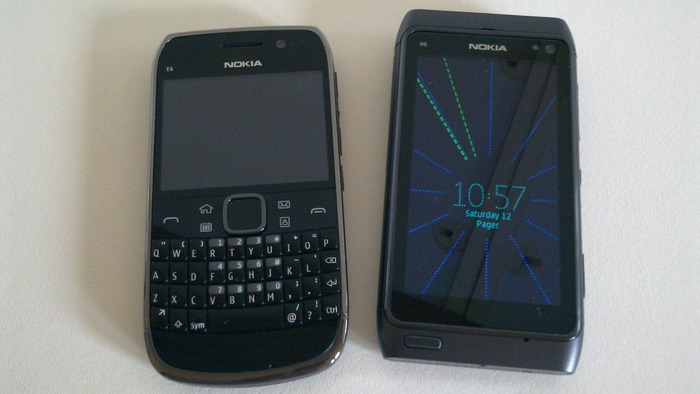
The E6 and the N8
Text input on a capacitive screen is definitely a challenge after you’ve been used to physical keyboards. However, you get used to it, at the cost of speed and accuracy. Despite the portrait QWERTY keyboard of Symbian Anna, higher typing speeds can often be achieved by falling back to the good old alphanumeric keypad. That alone makes it ideal for one handed use. For two handed typing, the landscape QWERTY keyboard in Symbian^3 is actually faster than using a physical keyboard though!
The biggest thing, literally, about using such devices is the screen. You soon become used to having a much larger display. In the case of transitioning from the E72 to the N8, the expansion was in both physical size and pixel space. Moving from 2.4" to 3.5", and from 320x240 (QVGA) pixels to 360x640 (nHD) pixels, respectively.
Can we ever go back?
Prior to me moving on from the E72, it received an update to display HTML email. While this was welcome, having such a small window onto a large formatted page, highlighted the point that the world was moving beyond QVGA displays.
Whenever I went back to the E72 after long periods on the N8, the restricted resolution was keenly felt. However, this was the only thing that made a true functional difference. Even though I’d become used to using a touch screen, the E72’s optical d-pad was still enough for me to breeze through the user interface (UI).
While the S60 3rd Edition homescreen looks dated compared to the Symbian touch UI, it is still adequate. It presents all the information that you would want to show in widgets; e.g. calendar, email and other notifications. The main drawback is that you can’t move things around. While S60 3rd Edition on the E71 and E72 did, technically, have two homescreens, it took so long to switch between them, they were rarely worth using. Therefore, another advantage goes to Symbian^3.
As for the camera, the N8 is an improvement on any smartphone, so I was happy!
So yes, I have to admit that using the N8 (and Android) did change my smartphone tastes. Therefore, I knew that living with the E6 would take some adjusting to.
Looking at the E6
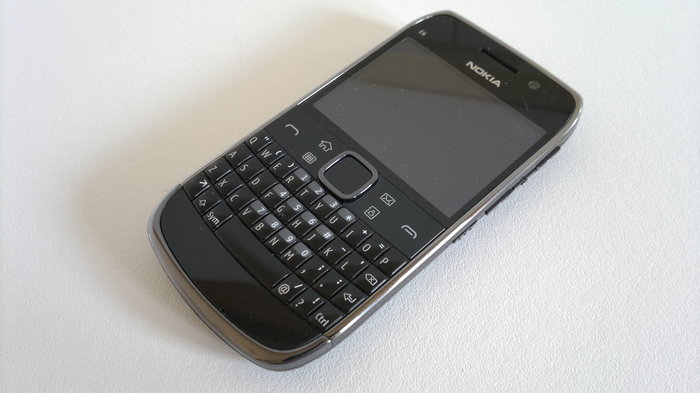
The Nokia E6
The E6 is a hybrid touch device
One of the E6’s unique selling points is that it adds a capacitive touch screen to the QWERTY candy bar form factor, a first for Nokia. It’s tempting to say that someone who has used the E72 exclusively, would forget to use the touch screen, and to a point, I would wager many will.
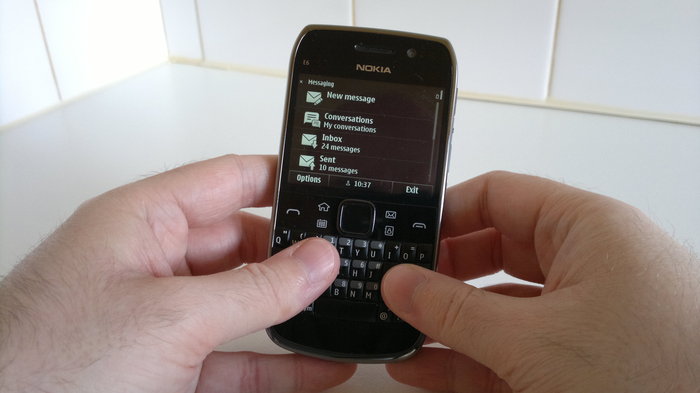
You can still hold the E6 in much the same way as the E72
Only so much of the Symbian^3 UI has been adapted to d-pad navigation. There are times in which you have to touch the screen. For instance, the E72’s soft-keys are gone because they are not needed. Instead, you have to tap the on-screen 'soft' buttons. Conversely, if you’re coming to the E6 from another Symbian touchscreen device, then thumbing through the interface will be second nature.
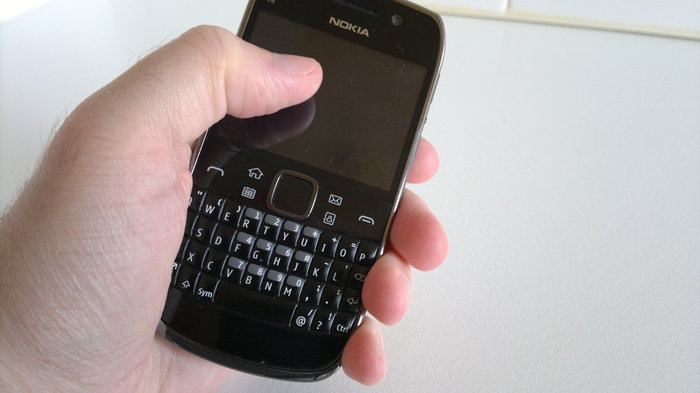
Keeping your thumb high for the touch screen
The E6’s touch screen only covers the top half of the device’s face, which sets it apart from most other touch screens. On other such devices, single handed use doesn’t normally require one to modify the reach of their thumb. Swipe gestures just work, and icons can be dragged to within reach. In the case of the E6, you have to modify your grip, to allow your thumb sufficient range to reach all the menu icons, etc.
Adapting Symbian^3 to VGA
The E6 has a larger resolution than any recent Symbian device, a full VGA (640x480) display. As Rafe detailed in his review, all those pixels are packed into a 2.46" display, giving it the highest pixel density of any current mobile device.
Therefore, as all touch elements have to conform to a minimum physical size for finger friendliness, everything has to be proportionately larger than on other Symbian devices. This means that you can only fit three widgets per homescreen. There are three smaller fixed widgets down the left-hand side of every homescreen. The first is the time and date, the second is the profile selector, and the third only appears to give you notifications.
See the screenshots below for a comparison between the E6, N8 and E72, to see how the pixel density affects layout and relative size of elements.
Homescreen comparisons
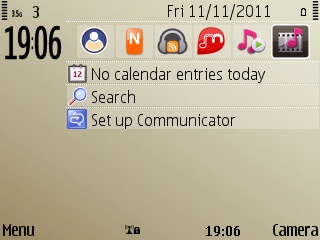
E72 homescreen
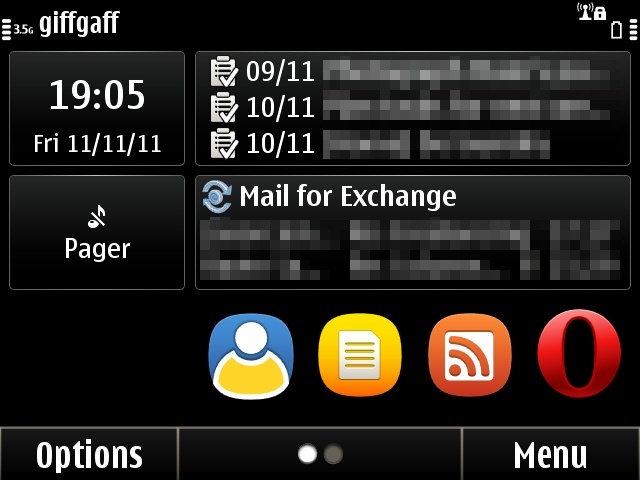
E6 homescreen
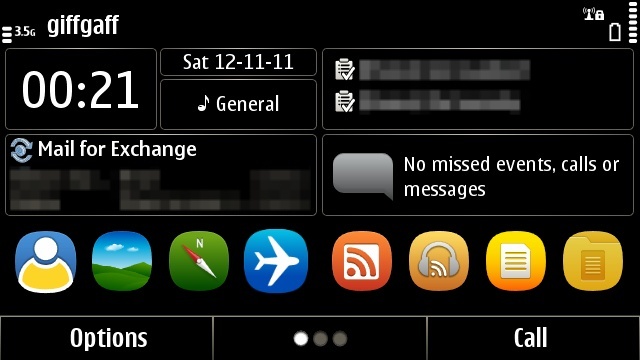
N8 homescreen
Application menu comparisons
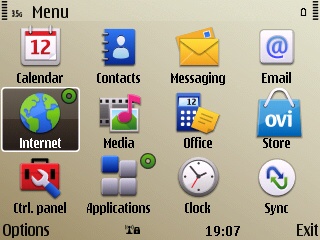
E72 menu

E6 menu
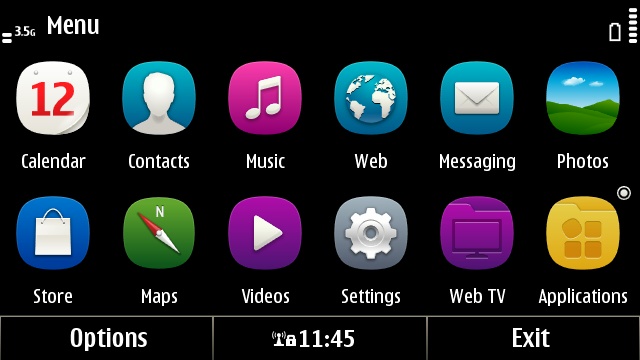
N8 menu
Using Gravity
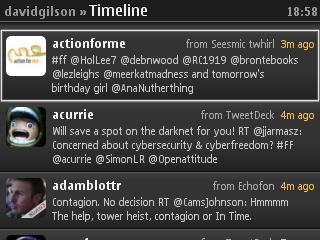
Gravity on the E72
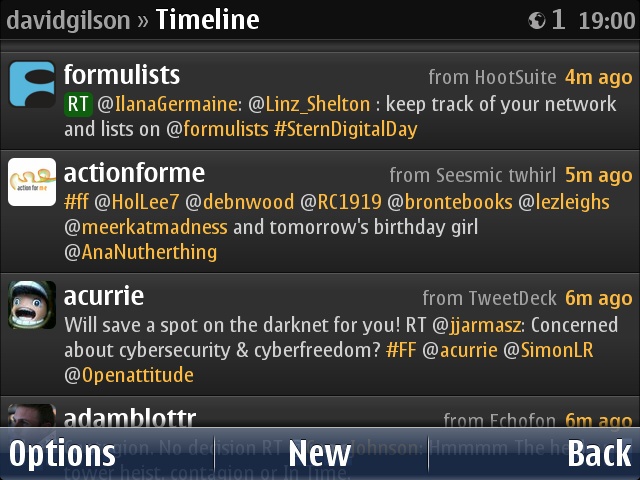
Gravity on the E6

Gravity on the N8
The E6 allows for up to five homescreens, instead of three as on other Symbian^3 devices. Hence, if you absolutely have to have as many widgets as possible, you can spread them out. However, for those coming from an S60 3rd or 5th Edition device, I think one or two homescreens will be a breath of fresh air, never mind five! Besides, having to constantly swipe between up to five homescreens could become tiresome when trying to find something quickly. Therefore, as long as you have the essentials, like email, calendar, music player and your favourite applications; you’ll already be feeling at home as an Eseries user.
I have one functionality gripe with the E6’s homescreen though. On other Symbian^3 devices, the notifications widget will give you a preview of the first item. However, because the E6 notification is such a small block, there isn’t enough room. Therefore, you never have a heads up preview of incoming text messages and reminders.
Buttons, buttons, and more buttons
The E72 and the E6 are clearly the same type of device. However, they share little design language, and so intangibly feel completely different to look at.
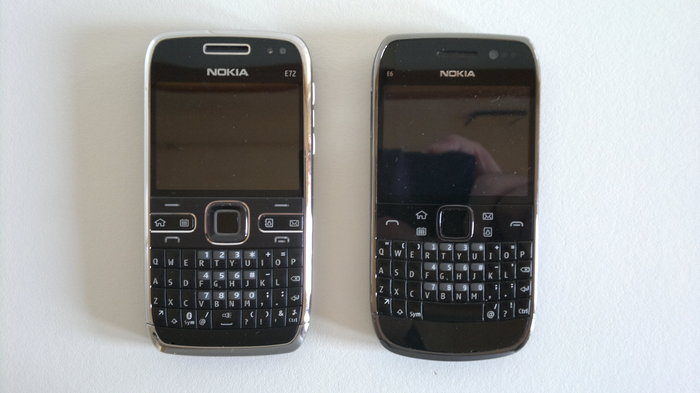
Different design languages of the E72 and E6
They keyboards share the same domed keys, with the same amount of stiffness. However, rows of keys on the E6 are slightly curved, while the E72’s keyboard is rectilinear. The most noticeable difference is the width of the space bar, occupying four columns, rather than two, in the case of the E72. This makes it easier to locate for the pseudo touch typists. The symbol layout is different, which will take some adjusting to for those who have used other Eseries devices. The only complaint I have about the new layout is that the ampersand (&) has been relegated to the symbol menu. If you’re the sort who likes to compress every text message and tweet, this is a symbol you’ll want to use quite frequently.
The d-pad of the E6 has a comparatively reductionist design, to that of the E72. The latter’s D-pad has a tapered design that presents a rather thin contact edge, and doesn’t have much travel. Conversely, the E6’s D-pad has a wider contact area, and much more reassuring travel when pressed.
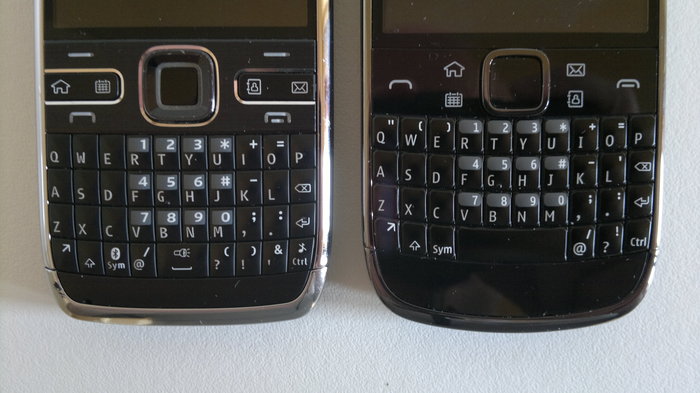
Comparing the E72 and E6 keyboards and d-pads
The call and application keys are very prominent on the E6, thanks to the wide plastic strip that covers the actual switches. This is a big improvement from the narrow keys on the E72. You can feel much more confident that when you mash your thumb down on the button strip, you’ll hit the right target. The only disadvantage is that a flat strip of plastic cannot give tactile feedback to suggest where your thumb is before you press.
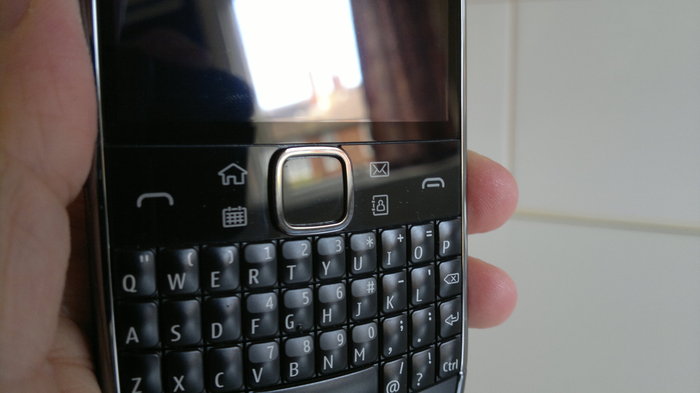
The E6’s d-pad, application and call keys
Another way in which the E6 improves on the E72 is that the D-pad, application keys and call keys are all stiffer and have more travel. The same keys on the E72 were all quite soft and didn’t depress very far. Therefore, the E6 gives much better feedback, so that you know you’ve really pressed something.
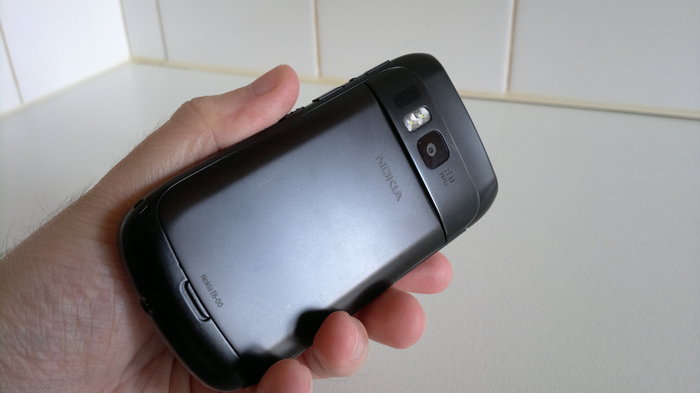
The E6’s battery cover
The metal battery cover of the E6 is much smoother than its matte appearance suggests. Compare this to the engraved stainless steel back of the E72. Even though its shiny back was a finger print magnet, its engraved lines were a good non-slip surface. The E6 however, is more droppable because of its smoother surface.
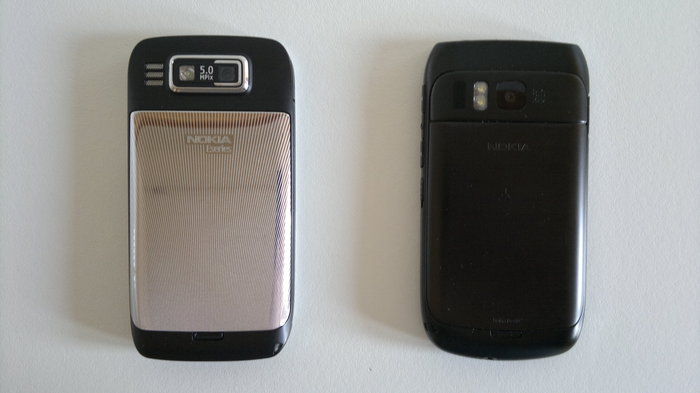
Viewing the backs of the E72 and E6 side by side
Another hybrid aspect of the E6 is the screen lock slider, as seen on every other touchscreen device from Nokia. As with all the other LED-equipped devices, this doubles as a torch control too.
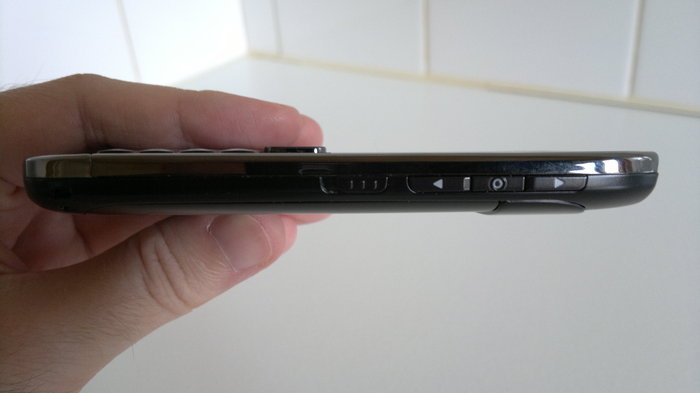
Side view, the E6’s lock slider, along with volume and voice control keys
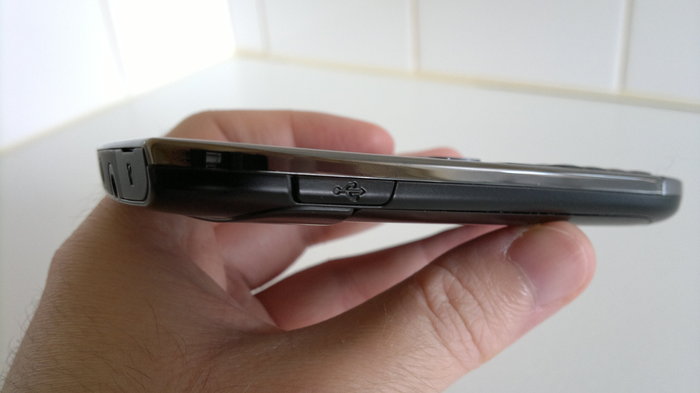
Opposite side view, with just the microUSB cover
In terms of size and weight, the two are almost the same. According to official specifications, there’s only 1cc difference in volume. However, the E6’s back has a curved rear face, which makes it look fatter than the E72 when viewed from the top.
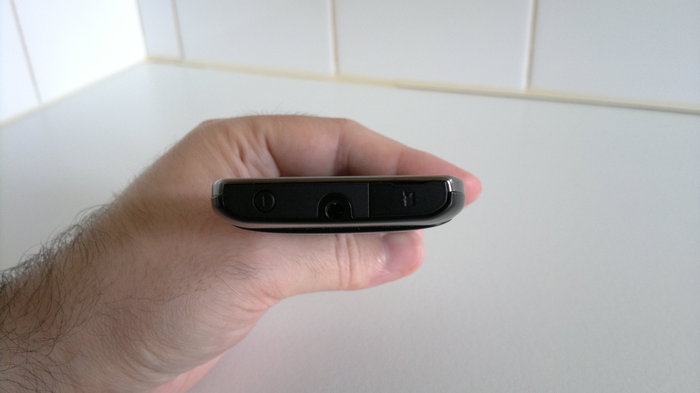
Viewing the E6 from the top
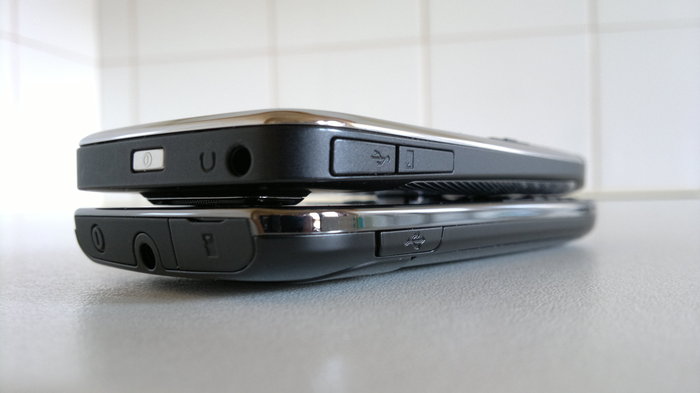
Comparing the E6 and the E72 top sides
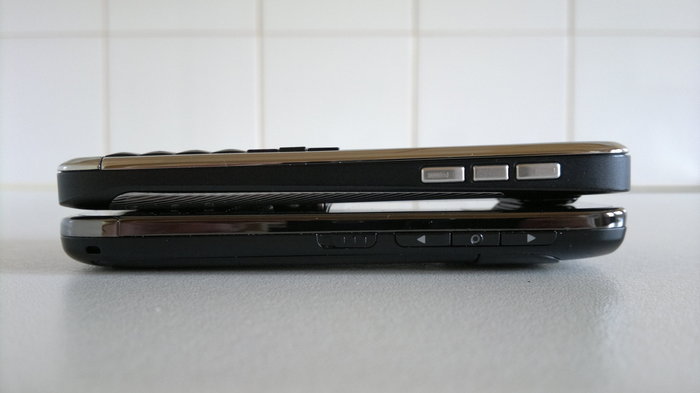
Comparing the E6 and E72 from the side
Also, the E6 uses an Extended Depth of Field (EDoF) camera, which is significantly smaller than an autofocus unit. You can see in its design, that the E6 has a convex back to encompass its camera. Meanwhile, the E72’s design is similar to the N8, in that the overall body is kept as thin as possible, with the camera module protruding from the back.
Camera comparison
EDoF has been notably unpopular among bloggers. The main disadvantages are its minimum focal length and the software processing artifacts. The algorithms used to create an image where everything is in focus, cause a certain degree of fuzziness, which is visible when viewing fine detail. Also, it cannot focus on anything closer than a metre away.
Some power users utilise their phone’s camera as a document scanner. The combination of the above two factors make this impossible with EDoF. It is, however, a niche case usage. (And for the record, I’m a member of that niche).
However, EDoF has the advantage of speed, since it doesn’t need to mechanically focus. As we’ve recently shown, EDoF can produce pleasing results, in the right conditions.
Here are two comparisons of the cameras. The first pair demonstrates the macro abilities of both.. The second pair is taken indoors with artificial lighting, and demonstrates the difference in depth of field. The E6 has an 8 megapixel camera, and the E72 is 5 megapixels, all shots have been cropped and scaled to show the same content.
Macro comparison
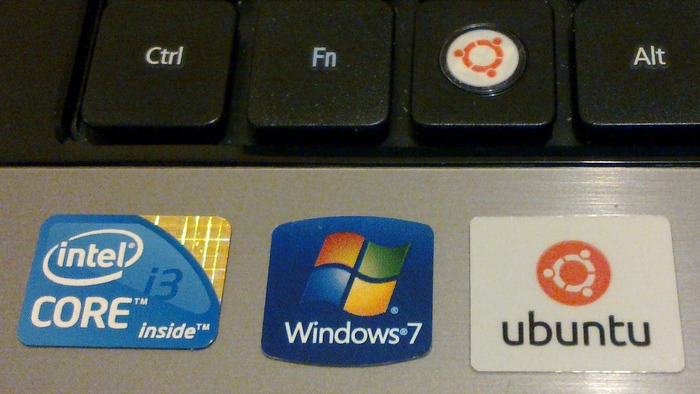
E72 close up
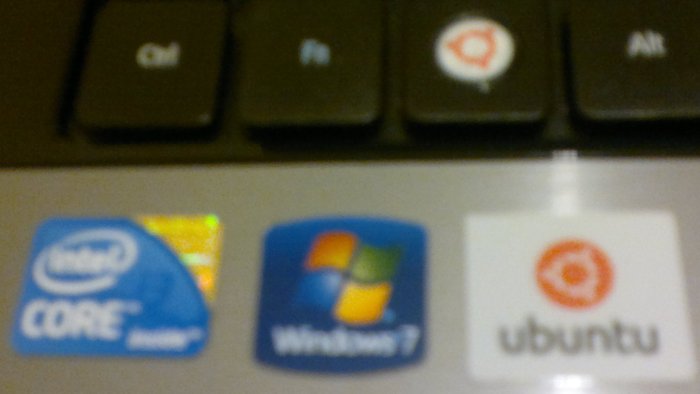
E6 close up
Depth of field comparison
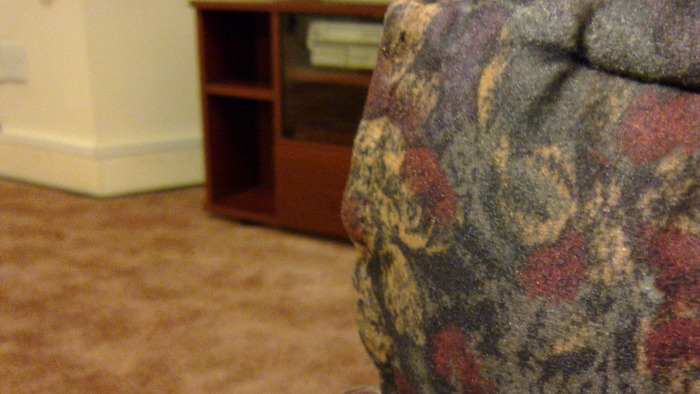
E72 depth of field
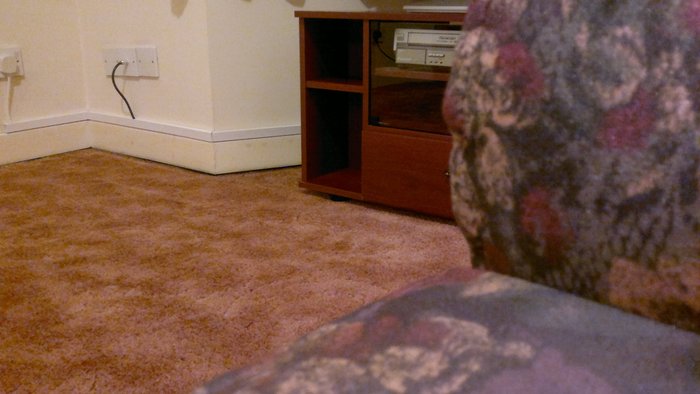
E6 depth of field
Performance
The E6 performs general tasks faster than the E72. Particularly so with web browsing, benefiting from the latest version of Symbian Web. Video playback also benefits with Symbian^3’s extensive codec support. The 'cover flow' style Music application is also in the E6, so you can skim through your album covers.
In terms of storing content, the E6 caters well. There is a microSDHC slot, complemented by an 8GB internal storage drive. Clearly an improvement over the E72, which only has a memory card slot.
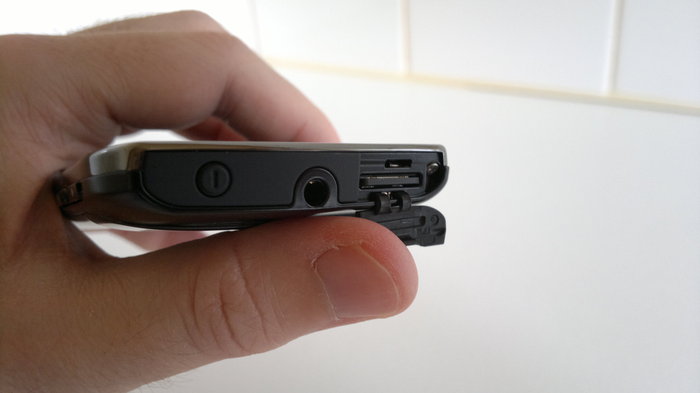
The E6’s memory card slot is found on the top of the device
Given that the E6 sports the hero BP–4L battery, I had high hopes. The E72 could go for several days without needing a charge, and Symbian^3 was supposed to be more power efficient than S60 3rd or 5th Editions. However, the E6 consistently ran through its battery faster than its predecessor. From my testing, I can report that it will get you through a day, with some power to spare. Hence, it’s not so bad, but not as good!
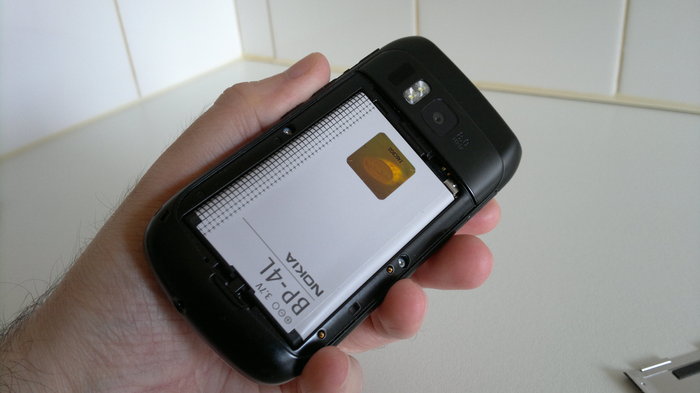
The BP–4L making a rare appearance in a Symbian^3 device!
Conclusion
The obvious question to ask at this point, is whether the E6 is a worthy upgrade to the E72? Looking at everything as objectively as I can, I have to say yes it is, but with a list of caveats.
The E72 is an old device, in terms of contract length; and its UI reflects this too. If you are dead set on sticking to the Blackberry style form factor, then your only alternatives are the few candy bar QWERTY Android devices, or a Blackberry. Android will likely disappoint, because it was not designed for this form factor and its battery life is generally poor. You could go with Blackberry, but by sticking with Symbian, your app store purchases will carry across to the E6.
N.B. Some applications have compatibility problems with the E6’s VGA display.
For those looking to upgrade from an E71, E72, E63, etc., take into account that Symbian^3 inherited the best aspects of the Eseries devices. Hence, you will likely find familiar touches in any of the current devices, not just the E6.
The E6 is a unique form factor in the Symbian^3 range. If you want a physical QWERTY keyboard that can be operated with one hand, even the E7–00 won’t help you. Conversely, if single handed use isn’t that important, and you want something on which you can watch videos and have a physical keyboard, then the E7 is probably a better device for you.
While I found the materials and shape of the E6 to be somewhat slippery*, the overall design is an improvement over previous devices. That is all thanks to the new application keys, call buttons, and D-pad. I felt much more engaged with them, than when I returned to the E72.
*N.B. You can improve the ‘grippyness’ of the E6 by adding a cheap gel casing. Brand new “Mesh Cases” can be found on eBay for as little as £1.50.
Having used large touchscreen phones all year, I admit that I found the 2.46" screen of the E6 rather constraining. Even though it has full VGA resolution, that advantage is somewhat lost due to readability and touch issues. However, even though the small size and high resolution can sometimes cancel each other out, the resolution does count as an improvement over QVGA devices. Text looks smoother, rather than the single pixel width fonts used on the E72.
In terms of text input, Symbian Anna is now at the stage where I feel that typing on a touchscreen is actually faster than using the E6 keyboard, but a physical keyboard is always more accurate. Of course, your mileage may vary depending on your hand-eye coordination.
Another factor in purchasing the E6 could come down to the camera. If you want a Symbian^3 device, but EDoF cannot service your needs, then the N8 is your only option. The constrained screen size and EDoF camera were enough to make me decide this would not be my main device. Furthermore, I didn’t think its battery life was sufficiently better than the N8’s, to warrant those downsides.
To take a different slant on all of this; what about choosing between a second hand E72 or E6 on eBay? The E72 is currently selling in auction for between £70 and £150, while the E6 is going for between £150 to £200. Also, consider that the E6 probably has a lot more firmware updates to come than the E72 does. Therefore, the E6 would probably be the wiser purchase.
However, if you are on a tight budget, the E72 can still serve you well. Remember that it has substantial battery life, a fantastic camera, and free Sat-Nav with Ovi Maps, and you can follow Steve’s 'Pimping the E72' guide to bring your apps up to a 2011 standard.
There we have it. In balance, the E6 is an improvement over the E72, and unless you have specific battery or camera needs, then it is a worthwhile upgrade from previous candybar QWERTY phones. However, if you’re used to large touchscreens, it could take some getting used to.

The Nokia E6–00
Related reading
Nokia E6 Gallery
Nokia E6 Review, Part 1 - Hardware
Nokia E6 Review, Part 2 - Software
Nokia E6 Review, Part 3 - Enterprise Credentials
David Gilson, 13 November 2011
Reviewed by David Gilson at
